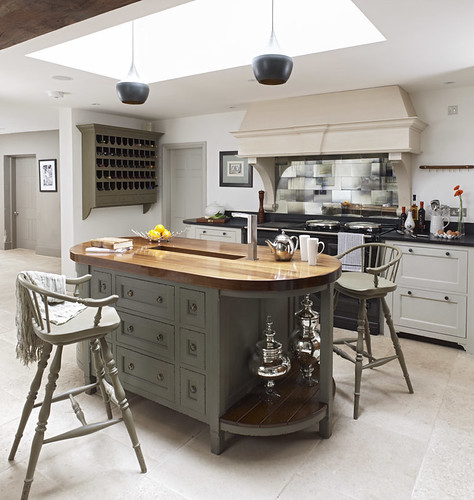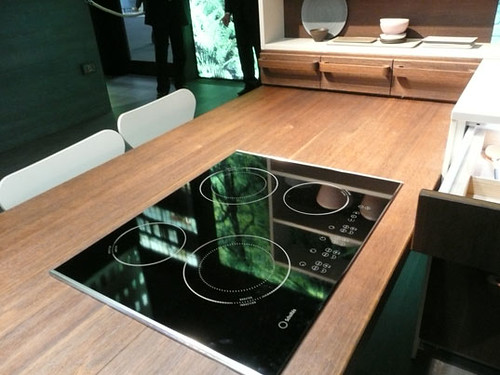For most people, the kitchen is a hub of family activity; a place where hours upon hour are spent preparing beautiful banquets and delicious desserts. However, you should be just as proud of your kitchen design, as you are of your culinary creations. When thinking about a new kitchen, or improving your current space, there are endless possibilities for the design to bring innovation and class to your room. Here are some great design ideas for your luxury kitchen.

Will you go classic, or modern? You might even find a harmony between the two!
When you take a step back and look at your kitchen, what is it that stands out and takes up most of the visual space of your kitchen? For most people, the main two aspects are cabinets and countertops, so make sure you think about these carefully before you make your purchases.
Countertops are a fantastic way to add class to your kitchen; they’re also the most important thing to invest in as far as quality is concerned. Your countertop will be dictated mostly by your budget, but shopping smart means that you can get great material for a fraction of the price. Carrara marble is an expensive option, but if you’ve got the budget for it, your luxury kitchen will look the part. Quartz is a great alternative for durability though, and often preferred for its great looks but low maintenance. Remember though that whatever you buy, all materials need maintaining from time to time. Make sure you keep up with protective coating and other care instructions to make the most of your investment!
‘So Last Season…’
Cabinets are undoubtedly the most prominent aspect of your kitchen and beautiful cabinetry is a sure-fire way to give your kitchen the ‘wow’ factor.
Dark wood is currently in fashion, but be aware that kitchen cabinets trends rotate more often than other areas of your luxury kitchen. Open shelving is also in for contemporary kitchens, but some styles lend themselves to closed cabinets for the sleek, minimalist look. If your budget allows, you can keep your luxury kitchen at the height of fashion by redecorating every 5-6 years. Neutral colours and materials will mean a beautiful, light kitchen to work in, and usually won’t mean a terrible fashion faux pas!
Turn Up the Heat

Not just a pretty face; Induction hobs look stunning, and are much more efficient than gas!
Luxury kitchens wouldn’t be much use without some luxury appliances to go with all the décor you’ve picked out. Thinking outside the box is what sets just a ‘lovely’ kitchen apart from a true luxury kitchen.
Induction cooking is something well worth considering; not only does it look sleek and modern, but it also saves around 60% of your budget compared with a gas option. The future of ventilation is one to investigate for your luxury kitchen, too. Down draft systems are state of the art ways to lose your cooking smoke, steam and smells without the big ventilation hood above your appliances. Going state of the art can save you money, in addition to looking great, and lasting for year after year.

Artistic Appliances
Our next great tip is one that not many people implement in their kitchens. To add an elegance to your luxury kitchen, and make a great design statement, think about framing your kitchen appliances! Not all luxury kitchens will suit framing, but usually vintage styles and wooden themes go beautifully with this design idea. Carved posts and artistic wooden columns make for a lovely homely feel to your luxury kitchen. They really help to add a touch of class, almost like having a four poster bed for your oven!

You Get What You Pay For
The classic phrase dictates that a wise investment will stand the test of time. In the kitchen industry, getting what you pay for is particularly pertinent.
If you’re planning a luxury kitchen, then your budget might be a scary thing to look at. The most important thing to know is that even though it might seem like you’re breaking the bank, the long term benefits of going high-end are well worth the initial cost. If you’re going to do it right, do it right the first time. The final top tip, is that you’ll only have to re-do a low cost kitchen again if you decide not to invest in the right areas.
Conclusion
Having looked at different ideas, it’s clear that your options and design ideas for your luxury kitchen are vast. Whatever your style, if you build it to last, your kitchen will serve you well, and look fantastic for many years to come. A perfect blend of practical and beautiful will make your kitchen the talking point of your neighbours, and be the little piece of paradise that your hard work deserves.




